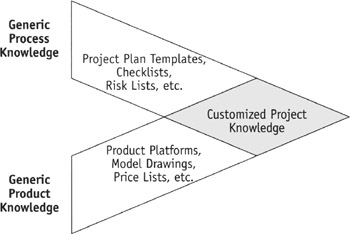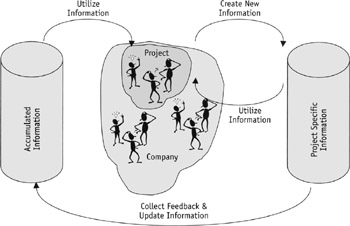Company Level Project Management
|
A project company has to have strong company level management above the management of individual projects. The company level management is responsible for managing the whole delivery process and other processes to support project management in an effective manner. In the case study companies of the FIT-PRO research, three specific company level project management areas in need of improvements were identified:
-
Sales management
-
Structures and standard models for projects
-
Learning between projects.
In the following, these areas are discussed in more detail. The discussion is based on empirical findings from the case study companies.
Sales Management
The success of the sales phase determines the success of the whole project. If the sales phase is poorly managed, project management has no chance of executing the project successfully. During the sales negotiation phase, the commercial aspects of the contract tend to dominate while the technical aspects are clarified often even after the contract has been already signed. Clarifying all the technical details would require a large amount of engineering work during the sales phase. In many cases, the required engineering work would consume too much resources and time. Thus, the company has to have a clear sales policy, which determines the preferred solutions and excludes the impossible solutions already during the sales phase.
The completeness of the sales specification is one of the important factors that predict the success of the project. Open questions include risks that may endanger the profitability of the project. Only part of these questions are related to customers' decision-making with the rest depending on the project company's internal processes. Typically, the technical solution includes many assumptions and many features that are yet unknown. This emphasizes the importance of risk management in the sales phase.
Standard Structures and Standard Models for Projects
The project company must have predefined structures and models both for its products and processes. In project deliveries, the delivered product is always somehow unique and it is, in practice, tailored to match the customer's requirements. The project company also has to tailor the delivery process case by case to match the requirements of the customer (see Figure 5). Application of standard structures and models enable:
-
Faster project start-up and implementation
-
Better project plans and budgets
-
Reduced risks
-
Distributed operations and effective use of sub-suppliers.

Figure 5: Standard Structures for Both Processes and Products Are Combined to Build Up the Project Structure
The first step toward better-managed projects is a modular project plan, which includes predefined project phases. The phases and their contents must enable several potential variations that each correspond to different business cases. The content descriptions for phases should determine the required tasks as well as the resources and tools that are needed to accomplish them. The ISO 9000 standard and other quality standards are basically used to fulfill the same needs, but their current empirical applications are often not detailed enough for daily use in project management. Many project companies have defined standard operating procedures that are used for implementing standardized and modularized product-related and process-related practices.
An analogy of successful management mechanisms concerning structures in management procedures is introduced by Brown and Eisenhardt (1997). They have studied the management of multiple-product innovation projects in six firms in the computer industry. According to the study, successful management principles blend limited structure around responsibilities and priorities with extensive communication and design freedom to create improvisation within current projects. In the management of companies with successful projects, rather than just communicate, managers combined limited structure of "semi-structures" (e.g., priorities, clear responsibilities, formal meetings) with extensive freedom to improvise current products. The semi-structures balance between order and disorder. Successful companies had clear priorities and responsibilities.
Learning between Projects
Disseminating experiences between projects is necessary for a project company in order to ensure its long-term success. In a project company the learning process takes place on several different levels. On the lowest level an individual working on a project learns. This individual gains experience in a project and carries this experience to his future projects. This type of learning is quite random if not organized properly. Furthermore, its usefulness is limited as the experience is tied up with the individual. In a project company, systematic learning schemes should be in place that ensure distributing experiences among project personnel. Learning among the project personnel may take place as social communication between group members and through different explicit information channels such as project documents (Figure 6).

Figure 6: Systematic Learning Process of a Project Company
Tight schedules and geographical dispersion of projects have reduced the amount of social communication taking place during projects. When this social communication is missing, the project must develop specific means to increase communication. Such means may include, for example, project databases, document archives, and project portfolio databases that ensure effective information sharing and transparency of project information across projects. However, the technical tools cannot replace social communication completely. Meetings are still needed to guarantee possibilities for open discussion, e.g., project kickoff, review meetings, project closeout workshops, or portfolio review meetings. The empirical study with the case study companies indicated that from the viewpoint of other projects it is important to report and transform information of a single project in a predetermined format and in a formal way. Adequate technical support of appropriate information systems and databases is essential. Information sharing and learning across projects and across organizational units occur via a combination of transfer of both explicit and tacit knowledge and the situation in which the knowledge is shared. In this respect, the elements of a knowledge-creation model proposed by Nonaka et al. (2000) are most relevant. The model includes; the socialization-externalization-combination-internalization process for knowledge creation through the conversion of tacit and explicit knowledge; the shared context for knowledge creation ("Ba"); and knowledge assets, the inputs, outputs, and moderators of the knowledge-creating process.
|
EAN: 2147483647
Pages: 207